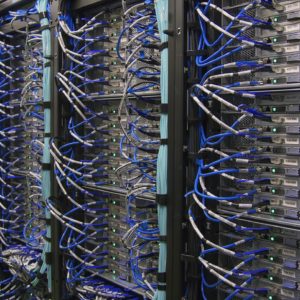Stop what you’re doing for a minute. Turn everything off. Just stand still and listen. What you’re hearing is the empty echo chamber of the silent American workplace.
Yes, that’s hard to believe given where the economy is right now. But, so was the environmental crisis when Rachel Carson first wrote about it in her 1962 book Silent Spring. The threat was hidden in plain sight – there but unrecognized – and that made its impact all the more deadly. Certain chemical companies were drowning us in DDT and other engineered pesticides, polluting the planet and devastating people’s health. The book made that danger visible and activated us to address it.
Today, an equally dangerous development is being spewed into the workplace by a segment of America’s high tech industry. They are introducing another engineered product – artificial intelligence – so quickly and with so little forethought that it is killing off jobs for humans by the millions. And as with pesticides, no one is safe. The devastation is seeping into every career field and industry at every level, from the skilled trades to professional positions and from entry level jobs to the c-suite.
Consider this:
• The Boston Consulting Group forecasts that robots will push humans out of 23 percent of all blue-collar industrial jobs in just the next two years.
• And, McKinsey & Company estimates that 40 percent of all white-collar knowledge jobs will be lost to super-intelligent machines in the next seven years.
Those statistics are more than numbers. They represent the lives of millions of working men and women. Their occupations, their livelihood, their sense of self-respect, and tragically their faith in the American Dream will be strangled by algorithms and automation. And equally as important, it’s not going to happen at some distant point in the future. Those jobs (and more) will be lost within the lifetime of every person now in the workforce.
Now, to be clear, AI is not a pesticide. The technology itself is not the threat. Its unconstrained development is. Certain high tech companies are thrusting us into the Machine Age with even less understanding of its implications than they and other companies had when they launched social media into the public domain. And, just as trolls, fake news, foreign manipulators and hate speech have polluted the Internet, the ever-accelerating introduction of ever-smarter computers and ever more capable robots will make the workplace inhospitable to human workers. They will terminate more and more of the population’s access to paid employment.
So, what’s to be done?
We need to relearn the lesson of Silent Spring. That single book taught us the power of citizen mobilization. It inspired an environmental movement that galvanized people to action, first to educate themselves on the dimensions and causes of the threat, and then, to actions that would redress it. Much remains to be done to care for our planet, of course, but at least the work has begun.
Now, we must do the same to understand and deal with the threat of indiscriminate AI development. There is no way to stop the introduction of intelligent machines, so the only feasible solution is to prepare for it. Those machines will eventually create near universal unemployment in America, and now is the time to answer the only question that matters when they do. What will humans do when machines take over?
Thanks for reading,
Peter

2 responses to “The Silent Workplace”
Humans must prepare for the evolution in the workforce. Retool. Retrain. Rebrand.
Thanks for your comment, Sharon. You’re absolutely right. Preparation is the only way to minimize the disruption that will occur. I use a technique called “newsfeed realism” in my book to paint a realistic but fictional portrait of what could happen.